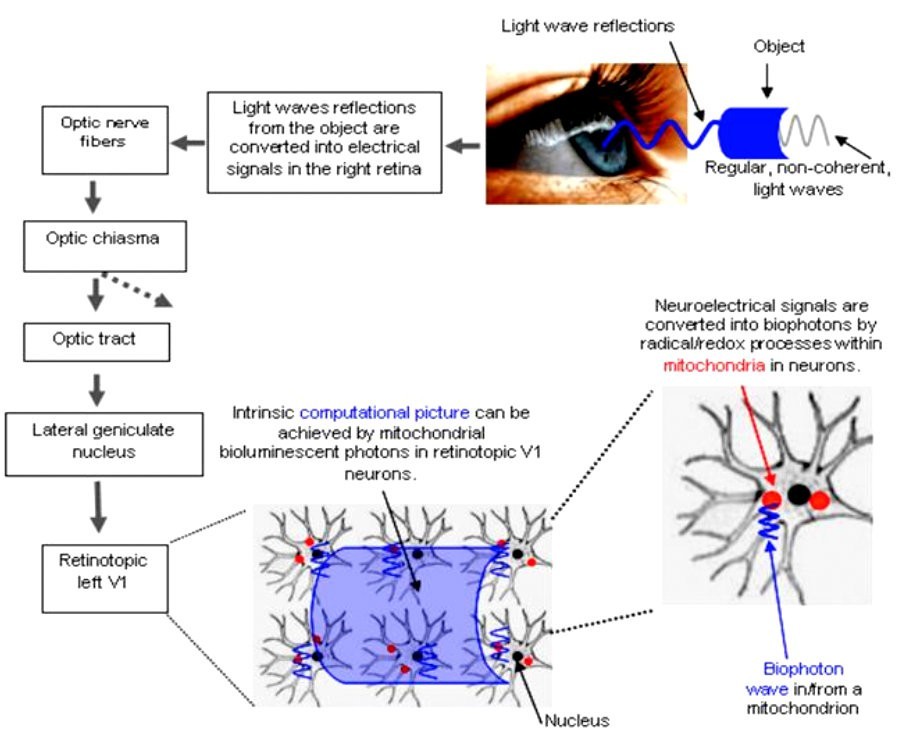Estimation of the number of biophotons involved in the visual perception of a single object image: Biophoton intensity can be considerably higher inside cells than outside
I. Bókkon1, V. Salari 2,3. J.A. Tuszynski4I, Antal5
1Doctoral School of Pharmaceutical and Pharmacological Sciences, Semmelweis University, Hungary
2Kerman Neuroscience Research Center (KNRC), Kerman, Iran
3Afzal Research Institute, Kerman, Iran
4Department of Physics, University of Alberta, Edmonton, T6G 2J1, Canada
5Department of Pharmaceutics, Semmelweis University, Budapest, Hungary
Corresponding author: I. Bókkon. Contact: bokkoni@yahoo.com

Abstract
Recently, we have proposed a redox molecular hypothesis about the natural biophysical substrate of visual perception and imagery (Bókkon, 2009. BioSystems Bókkon and D’Angiulli, 2009. Bioscience Hypotheses). Namely, the retina transforms external photon signals into electrical signals that are carried to the V1 (striate cortex). Then, V1 retinotopic electrical signals (spikerelated electrical signals along classical axonal-dendritic pathways) can be converted into regulated ultraweak bioluminescent photons (biophotons) through redox processes within retinotopic visual neurons that make it possible to create intrinsic biophysical pictures during visual perception and imagery. However, the consensus opinion is to consider biophotons as by-products of cellular metabolism. This paper argues that biophotons are not by-products, other than originating from regulated cellular radical/redox processes. It also shows that the biophoton intensity can be considerably higher inside cells than outside. Our simple calculations, within a level of accuracy, suggest that the real biophoton intensity in retinotopic neurons may be sufficient for creating intrinsic biophysical picture representation of a single object image during visual perception.
Keywords: Neurons, Visual perception, Free radicals, Biophotons, Biophysical picture
- Introduction
The homeothermic state has been suggested
